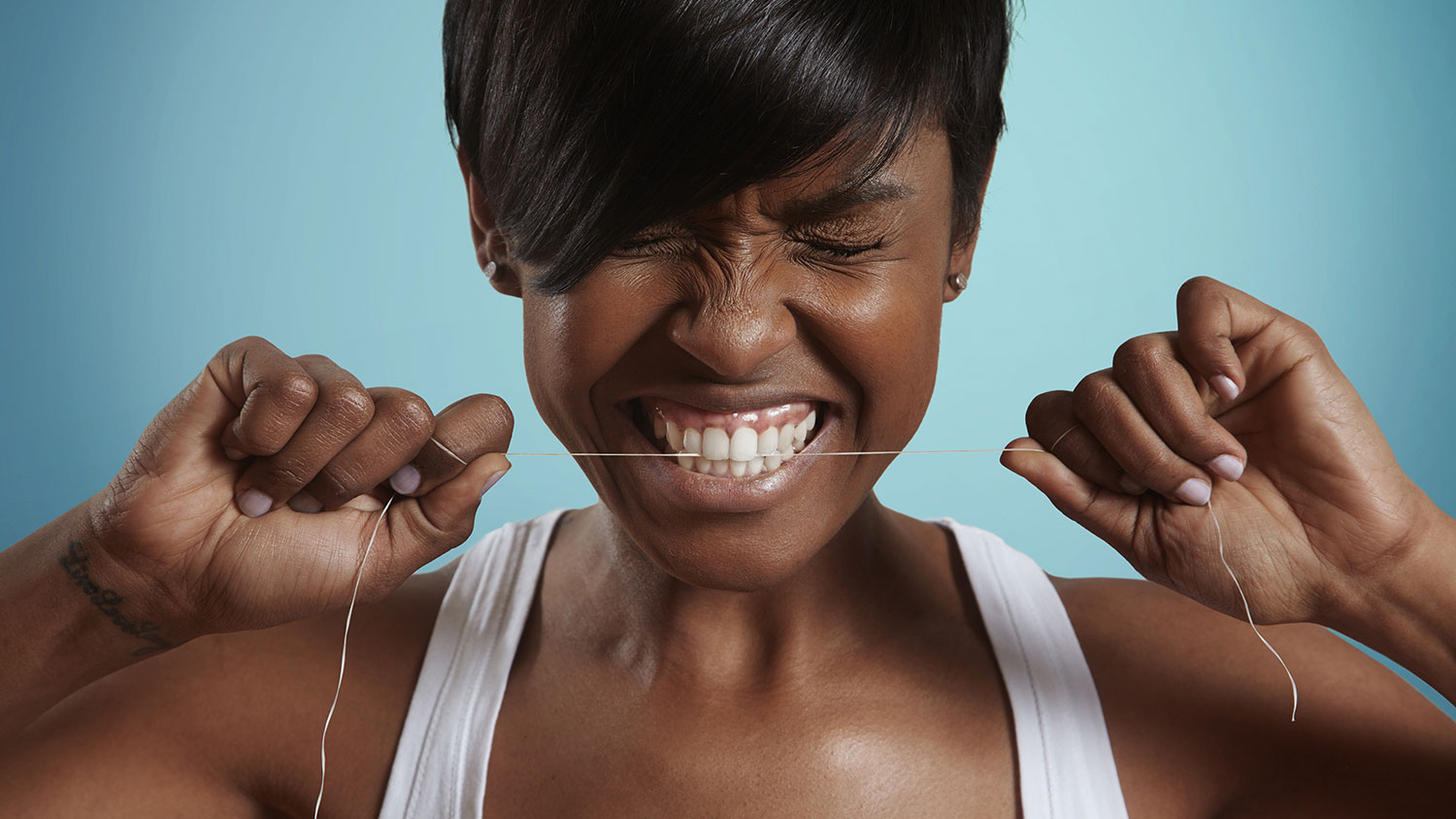Q. Can we please talk about floss? One day I decided to open that little container and examine the roll of floss inside. “The roll is tiny,” I thought, especially compared to the packaging. Heck, there might be more plastic in the packaging than in the actual floss! So I started protesting big plastic from my bathroom, by reusing my floss. We reuse toothbrushes, why can’t we reuse floss? I tried to get a more string-like floss with less plastic, but it tears into tiny threads in my mouth when I reuse it.
This zero-waster is strung out over floss. Please, can you help me learn what is the best floss to use for the environment and myself?
Alec H.
Arcata, CA
A. Dearest Alec,
I thought you would never ask. Yes, of course we can talk about floss. I usually have to wait for the bimonthly Oral Hygiene Club meetings to indulge my passion for interdental health, so this is a real treat.
As anyone who’s ever been chided by the dentist knows, we do have to floss – well, to be more precise, we do have to clean between our teeth (more on the nuances later). Toothbrushes can’t reach all the little food bits that get stuck back there, and food bits beget bacteria and plaque, which beget tartar, which begets cavities, gum disease, and frighteningly toothless smiles. So skipping this step altogether isn’t quite zero-waste – the waste could very well be your teeth.
Still, the average floss setup is heavy on the packaging: You usually get a roll of floss inside a plastic cartridge inside a cardboard/plastic blister pack. The cartridges are often #5 plastics, which can be recycled in some areas (including Arcata, yay!) or creatively repurposed, so at least there’s that. And the floss itself? Typically it’s made from nylon or other plastic filaments; the waxed versions come coated with a petroleum-based treatment for easier use. In other words, it’s disposable by design.
You may have also noticed the increasingly popular floss pick, a little plastic holder that presumably makes flossing easier. These often come in bags of 100 or more at a time, underscoring their throwaway, on-the-go nature. Do I even need to register my disdain for using still more disposable plastic? And if you really must floss on the go, isn’t a regular floss cartridge packable enough? Reusable floss picks can be found, true, but they seem rather extraneous to me.
Unfortunately, Alec, reusing floss is not the solution. You already know one reason why: Multiple molar passes can shred the floss, reducing its effectiveness and feeling pretty icky to boot. And according to the American Dental Association (ADA), it can also transfer the gunk you just removed from one crevice into another. (Incidentally, the CDC says reusing your toothbrush is just fine as long as you rinse and air-dry it. Toothbrushes are made of sturdier stuff.)
What we can do is switch to an earth-friendlier floss variety. They’re not exactly weighing down the pharmacy shelves, but a few alternatives to the standard plastic-on-plastic floss do exist. Let’s start with one that earns the ADA’s seal of approval (meaning there’s science that says it keeps your chompers happy): Tom’s of Maine makes a floss that uses natural wax from plants and bees, though it’s still made of nylon.
Eco-Dent makes a couple of similar nylon flosses waxed with a rice bran coating (vegans, perk up your ears), plus packaged in cardboard, not plastic. And Radius sells silk floss coated in a plant-based wax, which it says will compost completely within 90 days.
And now for something completely different: The most high-tech dental floss out there isn’t floss at all, but a high-powered stream of water that blasts nasties out from your mouth’s nooks and crannies. The gizmo is called an oral irrigator or water flosser, and it either plugs into the wall or runs on a (rechargeable, often) battery. But Umbra, you may be thinking, why would we replace a simple, human-powered tool with yet another energy- and water-using plastic appliance to take up space on my bathroom sink — especially after what you just said about floss picks?
These are valid points, but the water flosser has three things going for it. One, science says it works to reduce plaque and prevent gum bleeding; two, it’s reusable and therefore produces no trash; and three, it lasts for years. And while it does use water and electricity, we’re not talking much of either. I’m no huge fan of plastic, but I do love a gift that keeps on giving.
I hope one of these choices is just the thing for your greener, cleaner mouth, Alec. Just don’t let any of this confusion keep you from flossing regularly, or you might end up with the bad kind of green teeth.
Gingivitis-lessly,
Umbra


